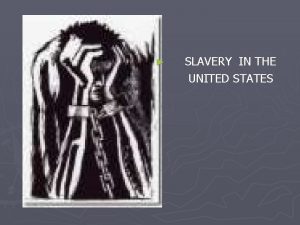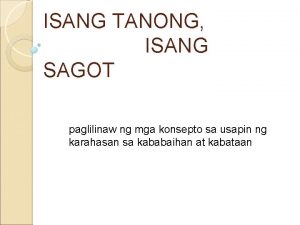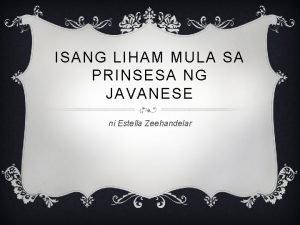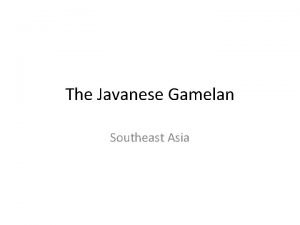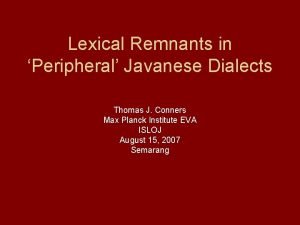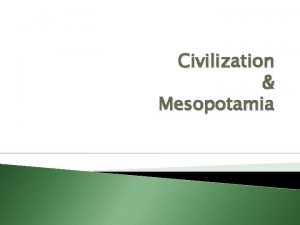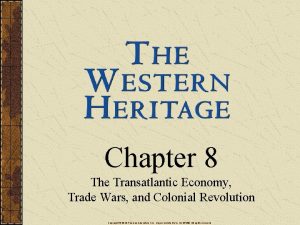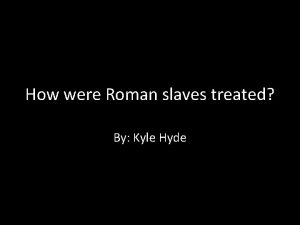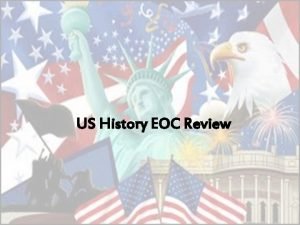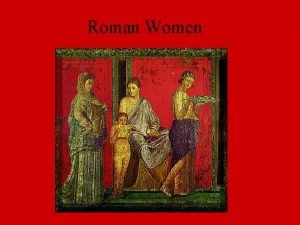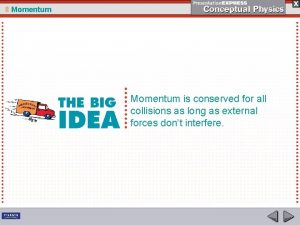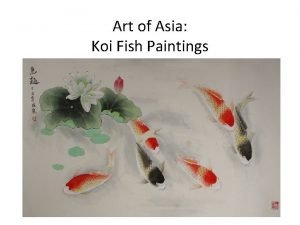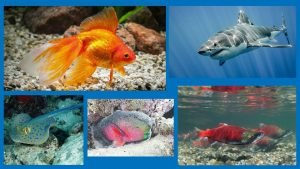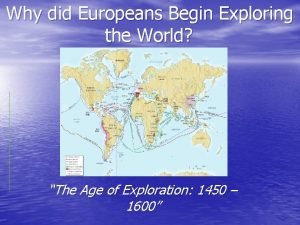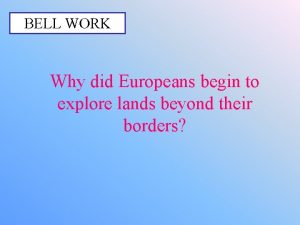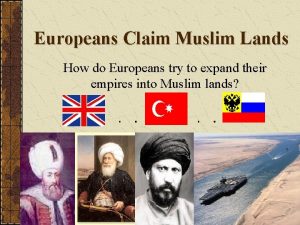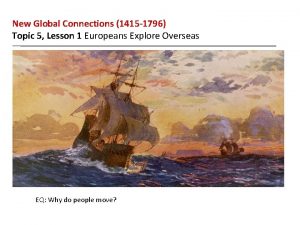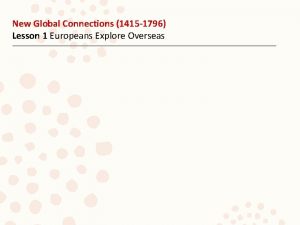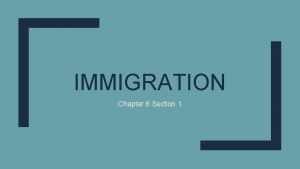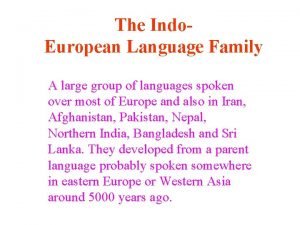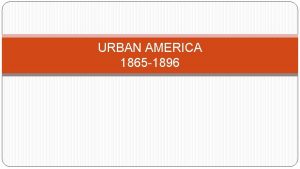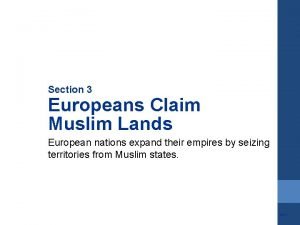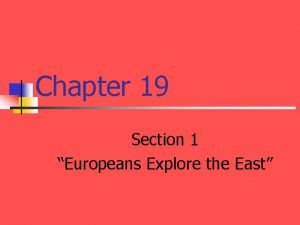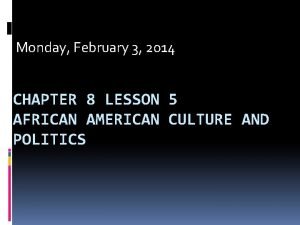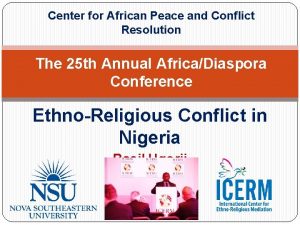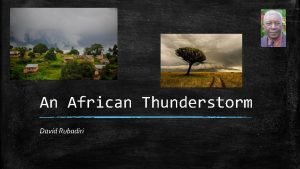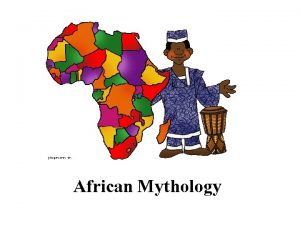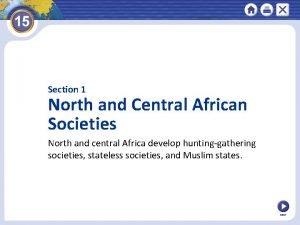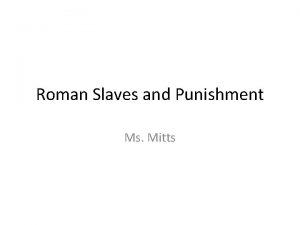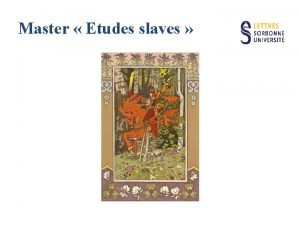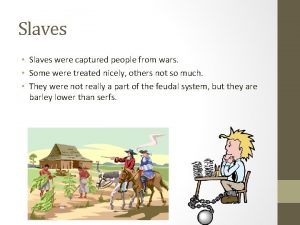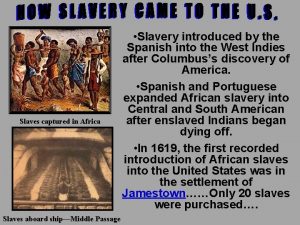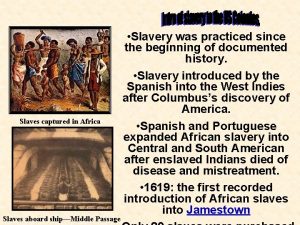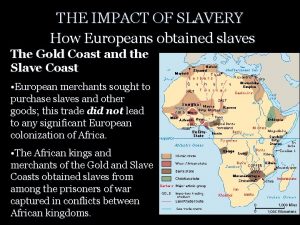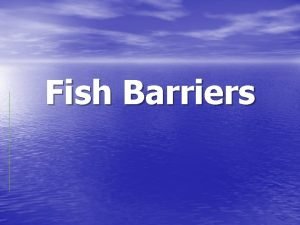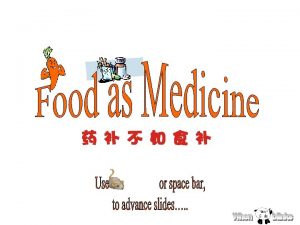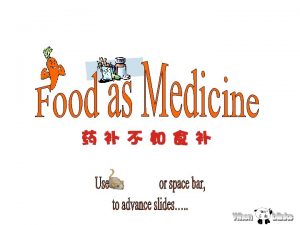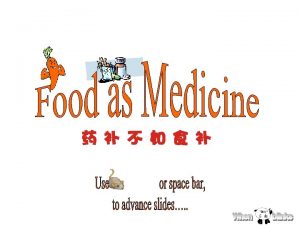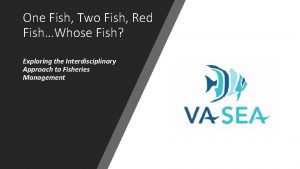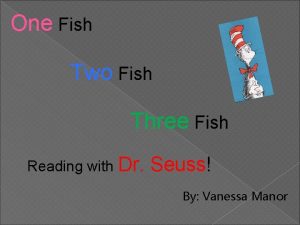Europeans Javanese Chinese and African slaves at fish











































- Slides: 43

� Europeans, Javanese, Chinese, and African slaves at fish market in Dutch Batavia 1661 (N. Jakarta) Chapter 23 Transoceanic Encounters and Global Connections 1

Portuguese Exploration � Search for fresh resources and lands to cultivate ◦ Originally for fishing �Fish, seals, whales ◦ Land hunger �Timber and where to grow wheat � Leads to discovery of Azores, Madeira Islands, Canary Islands ◦ Establish sugar plantations Copyright © 2007 The Mc. Graw-Hill Companies Inc. Permission Required for Reproduction or Display. 2

The Lure of Trade � Want to establish maritime routes to Asia ◦ Spices, silk, porcelain had been brought to Cairo where sold to Italian merchants ◦ Silk roads more dangerous since spread of Bubonic Plague and collapse of Mongol empire � Indian pepper, Chinese ginger, cloves and nutmeg increasingly essential to diet of European wealthy classes ◦ European monarchs realize they could eliminate middle man and yield enormous profits � African gold, ivory, slaves ◦ Use African gold to purchase Asian luxury goods Copyright © 2007 The Mc. Graw-Hill Companies Inc. Permission Required for Reproduction or Display. 3

Missionary Efforts � Expand the boundaries of Christianity ◦ Missionary religion like 2 others? � Franciscan, Dominican missionaries to India, central Asia and China ◦ Peaceful � Violent efforts with Crusades, Reconquista ◦ Reconquista ended in 1492 w/ the last Muslim kingdom of Granada Copyright © 2007 The Mc. Graw-Hill Companies Inc. Permission Required for Reproduction or Display. 4

Da Gama reaching the Indian port of Calicut in 1498 � Local authorities asked what he wanted � His reply: “Christians and spices!” Copyright © 2007 The Mc. Graw-Hill Companies Inc. Permission Required for Reproduction or Display. 5

The Technology of Exploration Chinese rudder introduced in 12 th century � Square sails replaced by triangular lateen sails: Caravel � ◦ Work better with cross winds � � Navigational instruments ◦ Magnetic compass & astrolabe Knowledge of winds, currents ◦ Trade winds, westerlies ◦ Monsoon winds � Determined latitude by measuring the angle of the sun or pole star above horizon. The “Volta do Mar” ◦ “return through the sea” ◦ Took them out of the way but more reliable than going against the trade winds Copyright © 2007 The Mc. Graw-Hill Companies Inc. Permission Required for Reproduction or Display. 6

� By using cross staffs to measure the angle of the sun or the pole star above the horizon, mariners could determine latitude. Copyright © 2007 The Mc. Graw-Hill Companies Inc. Permission Required for Reproduction or Display. 7

Wind and current patterns in the world’s oceans Copyright © 2007 The Mc. Graw-Hill Companies Inc. Permission Required for Reproduction or Display. 8

Portuguese Breakthroughs � Prince Henry of Portugal (13941460) ◦ Promoted exploration of west African coast: Gold Coast ◦ Established fortified trading posts � Exchanged European horses, leather, textiles, metalwares for gold and slaves � 1488 Bartolomeu Dias rounds Cape of Good Hope, enters Indian Ocean basin ◦ Storms, restless crew force return ◦ Lays foundation for sea route to India � Prince Henry the Navigator Vasco de Gama reaches India by this route, 1497 ◦ Didn’t see land for 3 months ◦ Cargo not received well in India ◦ Pepper & cinnamon hugely profitable in Europe ◦ By 1500, a trading post at Calicut ◦ English & Dutch to follow Vasco Da Gama Copyright © 2007 The Mc. Graw-Hill Companies Inc. Permission Required for Reproduction or Display. 9

Christopher Columbus (14511506) � � Believed Earth was smaller ◦ Estimated Japan approximately 2, 500 miles west of Canaries (actually 10, 000 miles) ◦ Thought sailing west would be profitable Portuguese kings do not fund proposed westward trip ◦ Dias had already found the route Fernando and Isabel of Spain underwrite voyage ◦ Sailed south to Canary Islands, picked up supplies and turned west Discovers Bahamas and Cuba ◦ Called the natives, Tainos, “Indians” ◦ Insisted after 3 rd voyage to South America that it was part of Asia ◦ Amerigo Vespucci’s explorations led mapmakers to name the new continents “America” after him Copyright © 2007 The Mc. Graw-Hill Companies Inc. Permission Required for Reproduction or Display. 10

� The earliest surviving world globe, produced by the German cartographer Martin Behaim, depicts the eastern hemisphere quite accurately but shows almost no land west of Iberia for east Asia. Copyright © 2007 The Mc. Graw-Hill Companies Inc. Permission Required for Reproduction or Display. 11

Hemispheric Links � Columbus tries three times, never reaches Asia � But by early 16 th century, several powers follow ◦ English, Spanish, French, Dutch � Realization of value of newly discovered Americas � Paves way for conquest, settlement, and exploitation of the Americas Copyright © 2007 The Mc. Graw-Hill Companies Inc. Permission Required for Reproduction or Display. 12

Circumnavigation of the Globe � Vasco de Balboa finds Pacific Ocean while searching for gold in Panama, 1513 ◦ Distance to Asia unknown � Ferdinand Magellan (14801521) not supported by Portuguese, uses Spanish support to circumnavigate globe in 1519 -1522 ◦ Sails through Strait of Magellan at southern tip of South America ◦ Crew assailed by scurvy, only 35 of 250 sailors survive journey ◦ Magellan killed in local political dispute in Philippine Islands Copyright © 2007 The Mc. Graw-Hill Companies Inc. Permission Required for Reproduction or Display. 13

Exploration of the Pacific � � � Took 3 centuries for Europeans to chart Spanish build Philippines. Mexico trade route English, Russians look for Northwest Passage to Asia ◦ Most of route clogged by ice in Arctic circle � Norwegian Roald Amundsen completes route only in 20 th century � Sir Frances Drake (England) explores west coast of North America in 16 th century ◦ Vancouver Island � Vitus Bering (Russia) sails through Bering Strait James Cook (England) explores southern Pacific –voyages above Led 3 expeditions to the Pacific Charted eastern Australia, New Zealand Spent months in Tahiti, Tonga, Hawaii were he learned customs, manners, languages of Polynesian peoples 14

Captain James Cook � A portrait of Captain James Cook painted by William Hodges about 1775 depicts a serious and determined man. ◦ Led 3 expeditions to the Pacific ◦ Charted eastern Australia, New Zealand ◦ Spent months in Tahiti, Tonga, Hawaii were he learned customs, manners, languages of Polynesian peoples James Cook 15

Copyright © 2007 The Mc. Graw-Hill Companies Inc. Permission Required for Reproduction or Display. 16

European exploration in the Pacific Ocean, 15191780 Copyright © 2007 The Mc. Graw-Hill Companies Inc. Permission Required for Reproduction or Display. 17

Trade and Conflict in Early Modern Asia � Europeans seeking commercial opportunities establish : 1. Trading Empires ◦ 2. ◦ ◦ Ex. Portugal, Dutch, English Small Island Empires Ex. Dutch in Indonesia Ex. Spain in Philippines Copyright © 2007 The Mc. Graw-Hill Companies Inc. Permission Required for Reproduction or Display. 18

Establishment of Trading-Post Empires � Portuguese first to set up trading posts ◦ 50 by mid-16 th century from W. Africa to E. Asia � � Not to establish trade monopolies, rather to charge duties Afonso d’Alboquerque major naval commander for Portugal ◦ Architect of trade duties policy; ◦ Sought control of Indian Ocean trade by seizing ports ◦ Forced merchants ships to have passes ◦ Violators would have hands amputated or executed ◦ Never had good control b/c few vessels � � Control ½ of all pepper and spices in Europe yet Arab traders continue to operate Portuguese control declines by end of 16 th c. Afonso D’Alboquerque Copyright © 2007 The Mc. Graw-Hill Companies Inc. Permission Required for Reproduction or Display. 19

English and Dutch Trading Posts � Rival, parallel trading networks � English concentrate on Indian trade ◦ Bombay, Madras, Calcutta � Dutch in Cape Town, Colombo, southern Pacific (Batavia) Batavia, Dutch trading post 20

The East India Companies � Dutch and English were more important to spice trade in 17 th c. ◦ Displace Portuguese by force as well as compete w/ each other � � The Dutch in 16 th century Highly commercialized and urbanized Business and maritime shipping operations were envy of Europe Sought to control spice trade but also the production of cloves, cinnamon, nutmeg, and mace ◦ Control spice-producing islands, forcing the people to only sell to them � Brutality over “nutmeg” ◦ Banda Islands of Indonesia ◦ Originally the only place nutmeg grew ◦ Used not only as spice, but as fragrance to get rid of smells � EX. 17 th c. plagues ◦ Dutch kill, enslave, or starve the population of 15, 000 and replace them w/Dutch planters and slave labor Banda Islands in Indonesia, where Dutch controlled the nutmeg production Copyright © 2007 The Mc. Graw-Hill Companies Inc. Permission Required for Reproduction or Display. 21

Asian Trade � Workers are harvesting mace, a spice derived from nutmeg trees that are indigenous to the Banda Islands of Indonesia. � Until the 19 th c. , these islands were the world's only source of this valuable spice. Copyright © 2007 The Mc. Graw-Hill Companies Inc. Permission Required for Reproduction or Display. 22

The East India Companies � Dutch and English were more important to spice trade in 17 th c. ◦ Displace Portuguese by force as well as compete w/ each other � Joint-stock company formed by English and Dutch ◦ Advantage of Dutch and English over Portuguese � � � English East India Trading Company, established 1600 Dutch United East India Company (VOC), established 1602 Privately owned ships, government support ◦ Empowered with right to engage in trade, build trading posts, even make war � Exceptionally profitable Copyright © 2007 The Mc. Graw-Hill Companies Inc. Permission Required for Reproduction or Display. 23

British East India Company � � � Less well-financed and less sophisticated than the Dutch Excluded from Spice Islands of the Dutch Go to India ◦ Bombay, Calcutta, and Madras on coast Didn’t go inland b/c of powerful Mughal Empire More concerned w/ Indian cotton textiles b/c popular in England American colonies Villages in the interior of India became specialized producers of cotton for the British market Copyright © 2007 The Mc. Graw-Hill Companies Inc. Permission Required for Reproduction or Display. 24

Significance of East Indian Companies � Profits from the trade allowed them to purchase goods w/out paying in gold and silver ◦ (Think of Spain… and the silver trade) � Dutch and English deal in bulk goods for mass markets ◦ Pepper, cotton textiles, tea, and coffee � By 18 th c. the British rule India and Dutch rule Indonesia Copyright © 2007 The Mc. Graw-Hill Companies Inc. Permission Required for Reproduction or Display. 25

Spain and the Philippines � Archipelago of islands occupied by culturally diverse peoples and organized into chiefdoms � Some Chinese settlers in the port towns � Not an interest to Japan and China � Spain establishes outright colonial rule � Becomes the only major outpost of Christianity in ASIA Copyright © 2007 The Mc. Graw-Hill Companies Inc. Permission Required for Reproduction or Display. 26

European Conquests in Southeast Asia � � � Spanish conquer Philippines, name them after King Philip II in 16 th century Manila becomes major port city Flourishing and culturally diverse 40, 000 inhabitants Prosperity attracts Japanese, Chinese ◦ Influx of Chinese traders were highly resented by Spanish b/c no conversion ◦ Frequent massacres throughout 17 th, up to 19 th century against the Chinese � 20, 000 Chinese killed in a massacre 1603 ◦ Significant missionary activity � Dutch concentrate on spice trade in Indonesia ◦ Establish Batavia, trading post in Java ◦ Less missionary activity ◦ Don’t want to rule, but control the production of spices Copyright © 2007 The Mc. Graw-Hill Companies Inc. Permission Required for Reproduction or Display. 27

Russian Expansion in Asia � Russians take over Mongol khanates, 16 th c. ◦ Now have control of the Volga River to Caspian Sea that offered opportunities for trade � Caucasus absorbed in 18 th century ◦ Georgia, Armenia, Azerbaijan � Siberian expansions in 16 th-17 th centuries ◦ 26 ethnic groups w/ 100 languages � Different responses to Russian expansion � Some trade and others rebell ◦ Lived by hunting, fishing, or herding reindeer ◦ Russia coerces them to supply pelts for trade ◦ Little success with missionary efforts �Converts exempt from fur tribute �Didn’t emphasize it like the Spanish Copyright © 2007 The Mc. Graw-Hill Companies Inc. Permission Required for Reproduction or Display. 28

Russian Occupation of Siberia � Criminals, prisoners of war exiled to Siberia � Disgruntled peasants migrate east � Trading posts develop � Russian population expands dramatically ◦ 1763: 420, 000 Russians in Siberia, outnumber indigenous peoples 2: 1 � By 19 th c. , additional migrants move east to mine gold, silver, copper and iron Copyright © 2007 The Mc. Graw-Hill Companies Inc. Permission Required for Reproduction or Display. 29

Cossack Jail � In the vanguard of Russian expansion across Siberia were the Cossacks, bands of fiercely independent warriors consisting of peasants who had escaped serfdom as well as criminals and other adventurers. This seventeenth-century jail was part of an early Cossack settlement on the Kamchatka Peninsula at the easternmost end of Siberia. It illustrates Russian wooden architecture. (Sovfoto/Eastfoto) Copyright © 2007 The Mc. Graw-Hill Companies Inc. Permission Required for Reproduction or Display. 30

What made Russian Expansion Possible? 1. ◦ 2. ◦ ◦ 3. ◦ 4. ◦ 5. Modern weaponry No gunpowder weapons from the indigenous peoples Organization from the state Must take an oath of allegiance to the czar Must pay tribute –fur Many died from epidemics Smallpox , measles Russification- making them Russian Convert to Christianity Influx of settlers that outnumber indigenous peoples Copyright © 2007 The Mc. Graw-Hill Companies Inc. Permission Required for Reproduction or Display. 31

The Seven Years’ War (1756 -1763) or the “Great War for Empire” � Commercial rivalries between empires at sea ◦ Ex. Dutch forces expel most Portuguese merchants from SE Asia- spices ◦ Ex. English and French become dominant carriers in Indian Ocean by 18 th c. –cotton and tea � Global conflict erupts: multiple theatres in Europe, India, Caribbean, North America ◦ Ex. N. America: merges with French and Indian War, 17541763 where England France battle over colonies in N. America ◦ Ex. Spanish and French try to limit English in Caribbean ◦ Involved Asian and indigenous American peoples also � British emerge victorious, establish primacy in India, Canada ◦ Paves the way for the establishment of the British empire in 19 th c. Copyright © 2007 The Mc. Graw-Hill Companies Inc. Permission Required for Reproduction or Display. 32

The Columbian Exchange � Named for Christopher Columbus � Global diffusion: ◦ ◦ Plants and crops Animals Human populations Disease pathogens � Links between previously independent biological zones � Permanently alters human geography, natural environment Copyright © 2007 The Mc. Graw-Hill Companies Inc. Permission Required for Reproduction or Display. 33

Plants and Animals of the Columbian Exchange � � � This eighteenth-century Peruvian painting illustrates two of the many biological species that crossed the Atlantic. Cattle from Europe flourished in the Americas, while cassava (also known as manioc), shown in the bottom of the picture, was native to South America but spread widely in Asia, and especially in Africa, where its edible root provided a major source of carbohydrates. (Martinez Campañon, Trujillo del Peru, v. II, courtesy of the Biblioteca del Palacio Real/Oronoz Archives) Copyright © 2007 The Mc. Graw-Hill Companies Inc. Permission Required for Reproduction or Display. 34

Tobacco � Tobacco was long used for religious and spiritual purposes in the Americas. After their arrival in the Americas, Europeans quickly popularized tobacco as a trade item and as a recreational drug to be smoked, snuffed, or chewed. Copyright © 2007 The Mc. Graw-Hill Companies Inc. Permission Required for Reproduction or Display. 35

Epidemic Diseases and Population Decline � Smallpox ◦ Also measles, diphtheria, whooping cough, influenza � No prior exposure to these diseases in western hemisphere or Oceania ◦ No inherited, acquired immunities � 1519 smallpox in Aztec Empire ◦ Population declines 90% within 100 years (17 million to 1. 3 million) Copyright © 2007 The Mc. Graw-Hill Companies Inc. Permission Required for Reproduction or Display. 36

Food Crops and Animals � Columbian exchange also increases overall food supply � Introduction to European animals to Americas ◦ Horses, cattle, pigs, chickens, etc. � Introduction Asia, Africa of American foods to Europe, ◦ Maize, potatoes, beans, etc. Copyright © 2007 The Mc. Graw-Hill Companies Inc. Permission Required for Reproduction or Display. 37

Human Population Movements � Enslaved Africans ◦ To South America, North America, Caribbean � European pioneers 1500 -1619 38

Origins of Global Trade � Transoceanic trade in Atlantic Ocean basin ◦ Manufactured goods from Europe ◦ Raw goods from Americas � The Manila Galleons ◦ 1565 -1815 Spanish galleons dominate Pacific Ocean trade ◦ Galleons: slick, fast, heavily armed ships capable of carrying large cargoes ◦ Chinese luxury goods for American raw materials, esp. silver Copyright © 2007 The Mc. Graw-Hill Companies Inc. Permission Required for Reproduction or Display. 39

Spanish Galleon � This is an artist's rendering of a Spanish galleon. Galleons were large, multidecked, highly stable and maneuverable sailing ships used by Europeans for war or commerce. The Spanish and the Portuguese built the largest types for their profitable overseas trade. Copyright © 2007 The Mc. Graw-Hill Companies Inc. Permission Required for Reproduction or Display. 40

Environmental Effects of Global Trade � Fur-bearing animals hunted to extinction or near-extinction: Beaver pelt ◦ Also whales, codfish, other animals with industrial uses � Relentless human exploitation of the natural environment Copyright © 2007 The Mc. Graw-Hill Companies Inc. Permission Required for Reproduction or Display. 41

What’s the Big Picture? � Economic Transformations: Commerce and Consequence � From Strayer’s “Ways of the World” � What motivated Europe? ◦ Muslim control of spice supply in a rapidly growing Europe ◦ Europe gaining wealth and desire for Asia goods ◦ Lack of products that Asia wanted, forced Europeans to pay in gold or silver ◦ Leads to a desire to find access to gold and silver Copyright © 2007 The Mc. Graw-Hill Companies Inc. Permission Required for Reproduction or Display. 42

Portugal: The “Trading Post Empire” � Control the commerce of the Indian Ocean � Never controlled more than ½ of the spice trade to Europe � Took it by force because European trade goods considered crude and unattractive in Asian markets � Could not compete w/ the peaceful trading communities � Ended up carrying Asian goods to Asian ports and selling shipping services � Many Portuguese settle in Asia or African ports and marry Asian women � By 1600, the Portuguese Trading Post Empire was in steep decline Copyright © 2007 The Mc. Graw-Hill Companies Inc. Permission Required for Reproduction or Display. 43
 Most brutal plantation owners
Most brutal plantation owners One fish two fish red fish blue fish ride
One fish two fish red fish blue fish ride One fish, two fish, blowfish, blue fish
One fish, two fish, blowfish, blue fish All vertebrates
All vertebrates Anglo chinese school chinese name
Anglo chinese school chinese name Kalagayan ng mahihirap
Kalagayan ng mahihirap Sino ang prinsesang javanese
Sino ang prinsesang javanese Ancient greek puppets
Ancient greek puppets Give at least three time-keeping or punctuating instruments
Give at least three time-keeping or punctuating instruments Jcpp sira
Jcpp sira Slaves to righteousness
Slaves to righteousness Slaves obey your earthly masters
Slaves obey your earthly masters Sumerian hierarchy farmers/slaves
Sumerian hierarchy farmers/slaves Ancient egyptian slaves
Ancient egyptian slaves Transatlantic slaves
Transatlantic slaves How were roman slaves treated
How were roman slaves treated In the 1850s, why did many runaway slaves go to canada? *
In the 1850s, why did many runaway slaves go to canada? * Catullus 85
Catullus 85 A big fish swims up and swallows a small fish at rest
A big fish swims up and swallows a small fish at rest Koi asia
Koi asia Cartilaginous fish reproduction
Cartilaginous fish reproduction Fishbony
Fishbony Butterfly fish market form
Butterfly fish market form Why did europeans start exploring
Why did europeans start exploring How much money
How much money Why did europeans begin to explore
Why did europeans begin to explore Europeans claim muslim lands
Europeans claim muslim lands New global connections test answers
New global connections test answers Lesson 1 europeans explore overseas
Lesson 1 europeans explore overseas Europeans flood into america
Europeans flood into america Europeans set sail
Europeans set sail Indo-europeans definition
Indo-europeans definition Sources us eu us europeans
Sources us eu us europeans Immigrants passing through ellis island
Immigrants passing through ellis island Europeans claim muslim lands
Europeans claim muslim lands Clean energy for all europeans
Clean energy for all europeans Chapter 19 section 1 europeans explore the east
Chapter 19 section 1 europeans explore the east Pan african movement stamp
Pan african movement stamp Lesson 5 african american culture and politics
Lesson 5 african american culture and politics Center for african peace and conflict resolution
Center for african peace and conflict resolution African thunderstorm analysis
African thunderstorm analysis African mythology gods and goddesses
African mythology gods and goddesses North and central african societies
North and central african societies What are the elements of folktale
What are the elements of folktale
